SDSU boasts many research opportunities within the EECS department and throughout the university. Many of our faculty perform exciting research in various areas of Electrical Engineering, Computer Science and Software Engineering. Listed below are some of our faculty's interests and recent projects. To learn more, please contact the respective faculty member. See the Our People page for contact information.
Electrical Engineering Research Groups
Materials and Device Group

The objective of this task will create real-time precision agriculture sensor systems that can be used to detect changes in temperature, CO2, NO3-N, oxygen, phosphate, nitrate, moisture and electrical conductivity (EC). This information can be used to calculate improvements in porosity, water flow, potential nutrient stresses and yield potential. Ground-based sensors linked to aerial remote sensing can be used to provide comprehensive information on the fate of the seed from planting to harvest. To achieve this objective, novel sensors, sensor networks and their integration into drones and/or swarms with real time mapping and monitoring capability will be developed. Non-contact sensing systems using high resolution camera, infrared, thermal, normalized difference vegetation index (NDVI) and multispectral sensors will be developed. This allows direct visibility over the health of soil and crops by viewing parameters such as sunlight absorption rates, transpiration rates, crop health, CO2 content, temperature, moisture, soil variation and health status.
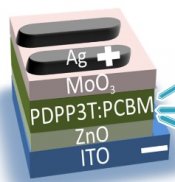
This research has been focusing on developing next generation cost effective solar cells using new approaches to solve challenges in photovoltaic devices. Current research focused on dye-sensitized solar cells, polymer solar cells and Perovskite solar cells. Three PhD students have graduated in the summer of 2016. Seven PhD and 2 MS students are currently working on these projects. This research has been funded by NSF, NASA, NAS and the State of South Dakota.
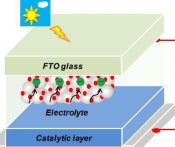
This work is developing novel photovoltaic devices with intrinsically integrated lithium ion batteries. Solar PV panels have the issue of unreliability due to its intermittency nature. Electric utilities have imposed PV power ramp rate regulations to make the electric grid secure. This demands use of energy storage.
Traditional approaches for operation of solar panels and storage as two independent units is rather expensive, inflexible, requires bigger space and suffers electric wire losses. The objective of this research is to develop integrated solar cells as solar harvester and Li-ion battery as storage, which can be simple, efficient and cost effective. Two PhD and two MS students are working on this project. This research is currently funded by NASA.
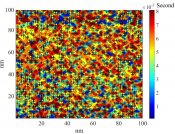
The objective of this project is to develop a state-of-the-art scanning probe microscope (SPM) based instrumentation, integrated with bias modulated hardware, to probe local charge carrier dynamics in nanostructured and disordered materials with high spatial and temporal resolution. The new system will be the first of its kind, which can probe charge carrier dynamics and map carrier density, transport/recombination lifetimes, diffusion length, mobility and recombination rates with high spatial (nm) and temporal (sub-μs) resolution in a wide variety of electronic materials and devices. Currently two PhD students and one MS students are working on this project. This work is funded by NSF.

- Increase the energy and power of energy storage devices
- MEMS chip-scale energy storage devices
- Flexible all-solid-state supercapacitors
- Safe Li-metal batteries with structural solid electrolyte
- Pseudo-capacitor with high specific capacitance
- Novel materials for energy harvesting devices
- Counter electrodes in dye-sensitized solar cell
- Advanced composite for transparent electrodes
- Photovoltaic devices based on novel junction
Contact: Dr. Yue Zhou
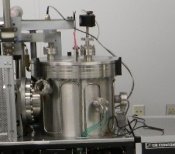
The 3350 square foot microelectronics clean room laboratory consists of five laboratory bays, five service chases, a support room, and a gowning room.
Bay 1: Organic Electronics
- Braun MB20 glovebox for organic electronics, atomic force microscope, and associated electronic instrumentation.
- Two fume hoods for cleaning and preparation of electronic materials
- Diamond and wire saws
- Tube furnace and vacuum oven
- Thick film printer
Bay 2: Characterization
- Hitachi S-3400 Hot Cathode Scanning Electron Microscope (SEM) with Energy Dispersive X-ray (EDX) analysis system
- Hitachi S-4700 Field Emitter Scanning Electron Microscope (SEM) with Energy Dispersive X-ray (EDX) analysis system
- Dektak Veeco 150 stylus profilometer
- CRC-150 sputter coater for SEM sample preparation
Bay 3: Film Deposition Bay 1
- Rapid Thermal Processing (RTP)
- Torr IBAD thin film deposition system (ion beam, e-beam, evaporative, and sputter)
- Torr Combination thin film deposition system (evaporative and sputter)
- Plasmatherm plasma enhanced large area chemical vapor deposition (PECVD) system.
Bay 4: Film Deposition Bay 2
- Picosun atomic layer deposition (ALD) system
- Fume hood for cleaning and preparation of electronic materials
- KJL thin film sputter deposition system with load lock for rapid sample transfer
- Trion II plasma etcher
- Kulicke and Soffa gold ball bonder
Bay 5: Lithography
- Yellow and red darkroom lighting
- De-ionized water system
- Substrate spin dryer
- VCA2000 contact angle measurement system
- Headway Research substrate spin coater in laminar flow hood
- MIDAS mask aligner and UV light source in laminar flow hood
- CVC evaporative and sublimation thin film deposition system
- Fume hood for cleaning and preparation of electronic materials
Advanced Characterization Tools - PI: Dr. Qiquan (Quinn) Qiao
Agilent 5500 SPM Atomic Force Microscopy with 4μm and 10 μm scanners (DEH 053)
Horiba Raman Spectroscopy (DEH 053)
Agilent and PerkinElmer UV-Vis-NIR spectrophotometers available from 200 nm to 3200 nm (DEH 053)
Rikaga Smart Lab X-ray diffraction (DEH 056)
Fourier transform infrared spectroscopy (FTIR)(DEH 056)
Steady state and time resolved FS920 fluorescence spectrometer (DEH 056)
Battery analyzers (DEH 056)
LifeSpec II spectrometer (DEH 056)
Femtosecond laser system (CDP FOG 100 femtosecond luminescence upconversion system) (DEH 011)
Transient photovoltage and photocurrent measurement systems using OBB’s Model OL-4300 nitrogen laser (crisp pulse at 337 nm) to pump the model 1011 dye laser (DEH 011)
Solar simulator (Xenon lamp, Newport) (DEH 011)
External quantum efficiency (EQE) measurements using a Xenon lamp (Newport) attached to a monochromator (Newport)
VersaSTAT 3 electrochemical impedance spectroscopy (DEH 058)
PDC-32G Plasma Cleaner (DEH 058)
Novascan PSD Pro Series Digital UV Ozone System (DEH 058)
MTI Precision Disc Cutter (DEH 052)
Plasma processing system using GSL1100X tube furnace (DEH 052)
Thermo CL10 Centrifuge (DEH 052)
MSK-110 Hydraulic Crimping Machine (DEH 052)
Woollam Ellipsometer (EC-400 and M-2000X) (DEH 036)
Bruker Dimension Icon ScanAsyst Scanning Probe Microscopy (DEH 036)
Ecopia Hall Effect Measurement system (HMS-3000) (DEH 036)
Shimadzu UV-2600 UV-Vis spectrophotometer (DEH 036)
Filmetrics Transmittance System (DEH 036)
Contact: Jason Sternhagen
Power Group (Power Jacks)
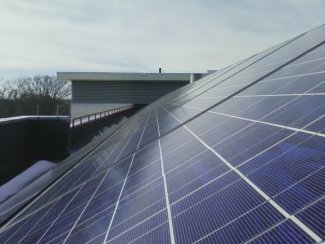
The Microgrid Lab has 23 kWp of rooftop solar panels, weather station, inverters for grid connected and offgrid applications, generators, programmable load banks, battery chargers and a variety of batteries and ultra-capacitor banks. The heart of the microgrid lab is the OPAL-RT real-time digital simulator. This provides 10 controllable nodes in one actual microgrid. The power electronics specifically includes three Sunny Boy grid-tied inverters, three Sunny Island inverter/chargers, six Xantrex XW6048 hybrid inverters/chargers and five Semikron inverter modules. The energy storage systems include 200 kWh of lead acid batteries, 8kWh lithium iron phosphate battery, and 3000 F of ultracapacitors. All the equipment can be controlled using the real-time digital simulator. Specific research projects include power electronics, microgrids and renewable energy systems integration and forecasting.
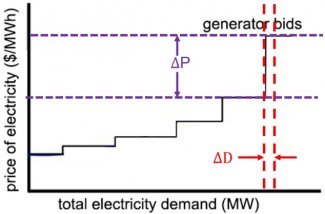
This research program focuses on HPC modeling and simulation, optimization and power systems energy management and markets. Research activities include co-simulation in power hardware-in-the-loop – connecting multiple concurrently running simulations to the same timeline to model the impact in multiple domains (e.g., markets, power systems and buildings). Specific projects include demand response (change in demand in response to change in price), energy management systems/EMS (automated home EMS to reduce electric bill and data center EMS to sell power to market) and sustainability (reduce output of dirty generator plants).
Image Processing Group
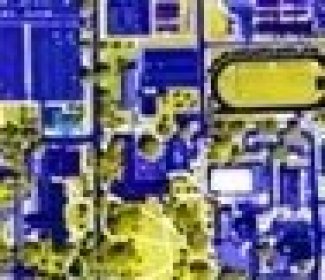
The SDSU Image Processing Laboratory work mainly focuses on satellite radiometry of Landsat 4, 5 and 7. Radiometric calibration of satellites involves characterization and correction of systematic degradations affecting the imagery. The lab's work allows users to extract more information from remotely sensed data. The projects have been primarily funded by EROS Data Center, SD; NASA Goddard Space Flight Center, MD; and NASA Stennis Space Center, MS.
Contact: Larry Leigh

LIDAR is an acronym for Light Detection And Ranging. A laser is able to provide a light beam with high intensity, high collimation, high coherence, high spectral purity and high polarization purity. Lidar has been used in many applications, including atmospheric remote sensing, trace gas detection, target detection and tracking, digital elevation modeling, autonomous vehicles, virtual reality, etc.
Dr. Tan’s research focuses on the application of polarimetric lidar in vegetation remote sensing. He developed a Multi-wavelength Airborne Polarimetric Lidar (MAPL) system for vegetation canopy study. His research is targeted on using the laser polarization information to detect the vegetation conditions, such as health condition, water stress, nutrient stress and many other physiological changes. The research is helping precision agriculture, forest management and ecological studies.
Contact: Dr. Songxin Tan

